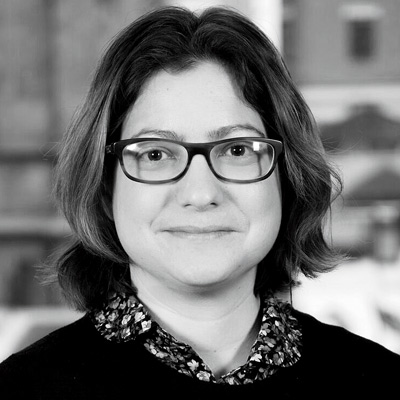
Illustration: Joyce Hesselberth
As an immigrant at an English-speaking U.S. public school, María Paula Ghiso was put in remedial courses. Yet at her weekend Argentinian school, Ghiso was a star pupil.
“I kept thinking, ‘But I’m the same person!’” says Ghiso. Now Associate Professor of Literacy Education, she believes that to flourish, students need curricular opportunities that honor their strengths. “I learned how schools’ organization doesn’t tap into children’s linguistic and cultural resources. We must shift the testing and accountability paradigm, which emphasizes the deficits of multilingual students and their families.”

Ghiso explores young immigrants’ “local cosmopolitanism” — their linguistic savvy and street-smart adaptability, born of uprooting and living in multiple cultures. Those experiences are “just as educative as a college year abroad or family vacations in Europe. Youth are constantly code-switching — mixing languages to speak to different people in different contexts.”
In Partnering with Immigrant Communities: Action through Literacy (Teachers College Press 2016), Ghiso, University of Pennsylvania education professor Gerald Campano and Bethany J. Welch, an authority on urban re-vitalization, detail the benefits of such “transnational” exposure. The book chronicles the Community Literacies Project, a church-based Philadelphia initiative where, the authors argue, exchanges among Indonesian, Vietnamese and Latino families about high school admissions and local health care resources involve sophisticated literacy and linguistic practices. The Project’s immigration workshops reflect African-American intellectual and activist legacies. Youth and families cooperate across cultural, social and linguistic boundaries to forge a shared vision of educational justice and human rights.
"I learned how schools’ organization doesn’t tap into children’s linguistic and cultural resources. We must shift the testing and accountability paradigm."
-- María Paula Ghiso, Associate Professor of Literacy Education
In calling for schools to recognize such activities as forms of literacy and civic engagement, Ghiso isn’t bashing teachers, who often “feel constrained by prescribed curriculum and evaluation systems.”
One avenue for change: getting to know neighborhood programs, local leaders, and students’ and families’ “literacies” outside of schools. “Being attentive to students’ linguistic and cultural resources in our teaching means seeing youth in their multiplicity and beyond institutional labels,” Ghiso says. In her current project in East Harlem, “classrooms might include a Puerto Rican family that has migrated for years between New York City and the Island, and whose elders fought for civil rights in the 1970s, and a more recently arrived Mexican family contending with renewed American nativism. These differences affect students’ school experiences and positioning. They also create opportunities for solidarity and mutual learning."